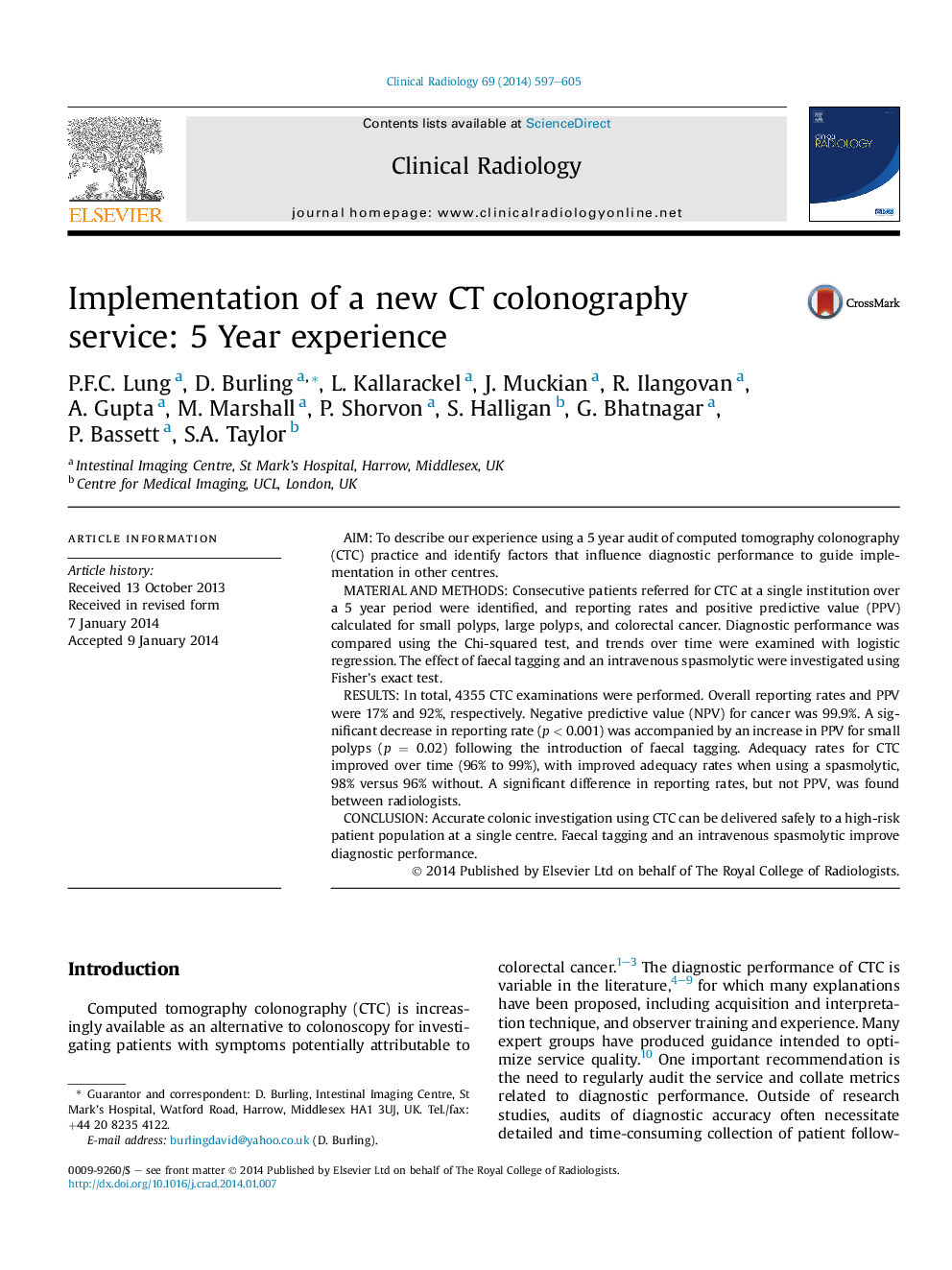| Article ID | Journal | Published Year | Pages | File Type |
|---|---|---|---|---|
| 3981741 | Clinical Radiology | 2014 | 9 Pages |
AimTo describe our experience using a 5 year audit of computed tomography colonography (CTC) practice and identify factors that influence diagnostic performance to guide implementation in other centres.Material and methodsConsecutive patients referred for CTC at a single institution over a 5 year period were identified, and reporting rates and positive predictive value (PPV) calculated for small polyps, large polyps, and colorectal cancer. Diagnostic performance was compared using the Chi-squared test, and trends over time were examined with logistic regression. The effect of faecal tagging and an intravenous spasmolytic were investigated using Fisher's exact test.ResultsIn total, 4355 CTC examinations were performed. Overall reporting rates and PPV were 17% and 92%, respectively. Negative predictive value (NPV) for cancer was 99.9%. A significant decrease in reporting rate (p < 0.001) was accompanied by an increase in PPV for small polyps (p = 0.02) following the introduction of faecal tagging. Adequacy rates for CTC improved over time (96% to 99%), with improved adequacy rates when using a spasmolytic, 98% versus 96% without. A significant difference in reporting rates, but not PPV, was found between radiologists.ConclusionAccurate colonic investigation using CTC can be delivered safely to a high-risk patient population at a single centre. Faecal tagging and an intravenous spasmolytic improve diagnostic performance.
